Selection of the InSight Landing Site

The selection of the Discovery Program InSight landing site took over four years from initial identification of possible areas that met engineering constraints, to downselection via targeted data from orbiters (especially Mars Reconnaissance Orbiter (MRO) Context Camera (CTX) and High-Resolution Imaging Science Experiment (HiRISE) images), to selection and certification via sophisticated entry, descent and landing (EDL) simulations. Constraints on elevation ( \(<\leq>2.5\ \mbox\) for sufficient atmosphere to slow the lander), latitude (initially 15°S–5°N and later 3°N–5°N for solar power and thermal management of the spacecraft), ellipse size (130 km by 27 km from ballistic entry and descent), and a load bearing surface without thick deposits of dust, severely limited acceptable areas to western Elysium Planitia. Within this area, 16 prospective ellipses were identified, which lie ∼600 km north of the Mars Science Laboratory (MSL) rover. Mapping of terrains in rapidly acquired CTX images identified especially benign smooth terrain and led to the downselection to four northern ellipses. Acquisition of nearly continuous HiRISE, additional Thermal Emission Imaging System (THEMIS), and High Resolution Stereo Camera (HRSC) images, along with radar data confirmed that ellipse E9 met all landing site constraints: with slopes
This is a preview of subscription content, log in via an institution to check access.
Access this article
Subscribe and save
Springer+ Basic
€32.70 /Month
- Get 10 units per month
- Download Article/Chapter or eBook
- 1 Unit = 1 Article or 1 Chapter
- Cancel anytime
Buy Now
Price includes VAT (France)
Instant access to the full article PDF.
Rent this article via DeepDyve
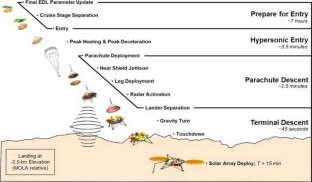

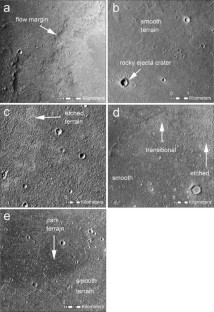
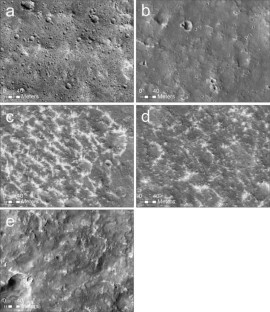
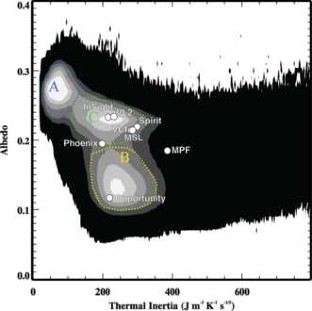
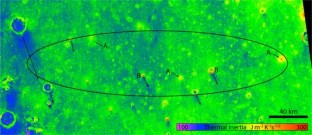
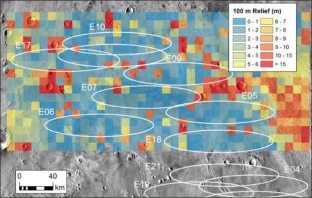
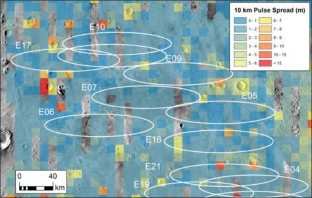
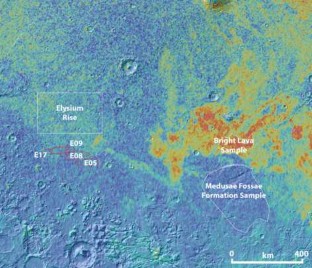
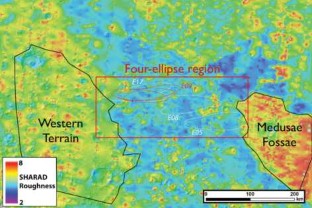
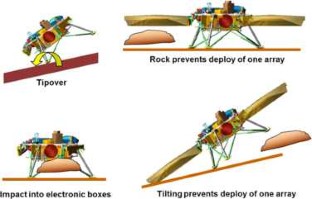
Similar content being viewed by others
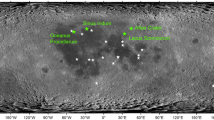
Candidate Landing Sites for the Emirates Lunar Mission (ELM) Rashid-1 Rover
Article 09 July 2024
The Chang’e 3 Mission Overview
Article 07 May 2015
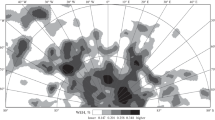
Selecting a Landing Site for the Luna 27 Spacecraft
Article 09 June 2022
References
- D.S. Adams, Phoenix Mars Scout landing site risk assessment, in 2008 IEEE Aerospace Conference, Piscataway, NJ, 2008 (IEEE Press, New York, 2008), pp. 1–8. doi:10.1109/AERO.2008.4526286Google Scholar
- F.S. Anderson, A.F.C. Haldemann, N.T. Bridges, M.P. Golombek, T.J. Parker, G. Neumann, Analysis of MOLA data for the Mars Exploration Rover landing sites. J. Geophys. Res. 108(E12), 8084 (2003). doi:10.1029/2003JE002125ArticleGoogle Scholar
- V. Ansan, T. Dezert (the DLR group), Western Elysium Planitia, What is regional geology telling us about sub-surface? in InSight Science Team Presentation, Zurich, Switzerland, September 5–9, 2015 (2015), and written communication Google Scholar
- R. Arvidson et al., Mars Exploration Program 2007 Phoenix landing site selection and characteristics. J. Geophys. Res. 113, E00A03 (2008). doi:10.1029/2007JE003021Google Scholar
- R.E. Arvidson et al., Results from the Mars Phoenix lander Robotic Arm experiment. J. Geophys. Res. 114, E00E02 (2009). doi:10.1029/2009JE003408ArticleGoogle Scholar
- W.B. Banerdt et al., InSight: a discovery mission to explore the interior of Mars, in 44th Lunar and Planetary Science (Lunar and Planetary Institute, Houston, 2013). Abstract #1915 Google Scholar
- G.D. Bart, H.J. Melosh, Distributions of boulders ejected from lunar craters. Icarus 209, 337–357 (2010). doi:10.1016/j.icarus.2010.05.023ArticleADSGoogle Scholar
- J. Benardini, L. Newlin, InSight PIP 2.4 planetary protection plan. Jet Propulsion Laboratory, California Institute of Technology, Document 75257, Revision A, 74 pp. (2013)
- R.A. Beyer, Meter-scale slopes of candidate InSight landings sites from point photoclinometry. Space Sci. Rev. (2016, this issue). doi:10.1007/s11214-016-0287-7Google Scholar
- R.A. Beyer, R.L. Kirk, Meter-scale slopes of candidate MSL landings sites from point photoclinometry. Space Sci. Rev. 170, 775–791 (2012). doi:10.1007/s11214-012-9925-xArticleADSGoogle Scholar
- R.A. Beyer, A.S. McEwen, R.L. Kirk, Meter-scale slopes of candidate MER landing sites from point photoclinometry. J. Geophys. Res. 108(E12), 26–31 (2003). doi:10.1029/2003JE002120ArticleGoogle Scholar
- R.A. Beyer, O. Alexandrov, S. McMichael, The Ames stereo pipeline: NASA’s open source automated stereogrammetry software (Users Guide and Documentation), Version 2.5.2 (2016). http://irg.arc.nasa.gov/ngt/stereo
- C. Bloom, M. Golombek, N. Warner, N. Wigton, Size frequency distribution and ejection velocity of Corinto crater secondaries in Elysium Planitia, in Eighth International Conference on Mars, Pasadena, CA, July 14–18, 2014 (Lunar and Planetary Institute, Houston, 2014). Abstract #1289 Google Scholar
- E.P. Bonfiglio, D. Adams, L. Craig, D.A. Spencer, R. Arvidson, T. Heet, Landing site dispersion analysis and statistical assessment for the Mars Phoenix Lander. J. Spacecr. Rockets 48, 5 (2011, September–October) ArticleGoogle Scholar
- J. Bostelmann, C. Heipke, Analysing blocks of HRSC strips for a simultaneous bundle adjustment. ISPRS Ann. Photogramm. Remote Sens. Spat. Inf. Sci. 2(4), 15–20 (2014) ArticleGoogle Scholar
- W.V. Boynton et al., Elemental abundances determined via the Mars Odyssey GRS, in The Martian Surface: Composition, Mineralogy and Physical Properties, ed. by J.F. Bell III (Cambridge University Press, Cambridge, 2008), pp. 105–124. Chap. 5 Google Scholar
- W.K. Brown, K.H. Wohletz, Derivation of the Weibull distribution based on physical principles and its connection to the Rosin–Rammler and lognormal distributions. J. Appl. Phys. 78, 2758–2763 (1995) ArticleADSGoogle Scholar
- M.J. Broxton, L.J. Edwards, The Ames Stereo Pipeline: Automated 3D surface reconstruction from orbital imagery, in 39th Lunar Planet Sci. Conf. (Lunar and Planetary Institute, Houston, 2008). Abstract #2419 Google Scholar
- S. Byrne et al., Distribution of mid-latitude ground ice on Mars from new impact craters. Science 325, 1674 (2009). doi:10.1126/science.117530ArticleADSGoogle Scholar
- B.A. Campbell, Radar backscatter from Mars: properties of rock-strewn surfaces. Icarus 150, 38–47 (2001) ArticleADSGoogle Scholar
- B.A. Campbell, Scale-dependent surface roughness behavior and its impact on empirical models for radar backscatter. IEEE Geosci. Remote Sens. 47, 3480–3488 (2009). doi:10.1109/TGRS.2009.2022752ArticleADSGoogle Scholar
- B.A. Campbell, High circular polarization ratios in radar scattering from geologic targets. J. Geophys. Res. 117, E06008 (2012). doi:10.1029/2012JE004061ArticleADSGoogle Scholar
- B.A. Campbell, L.M. Carter, B.R. Hawke, D.B. Campbell, R.R. Ghent, Volcanic and impact deposits of the Moon’s Aristarchus Plateau: a new view from Earth-based radar images. Geology 36, 135–138 (2008). doi:10.1130/G24310A.1ArticleADSGoogle Scholar
- B.A. Campbell, N.E. Putzig, L.M. Carter, G.A. Morgan, R.J. Phillips, J.J. Plaut, Roughness and near-surface density of Mars from SHARAD radar echoes. J. Geophys. Res. 118, 15 (2013). doi:10.1002/jgre.20050Google Scholar
- B.A. Cantor, MOC observations of the 2001 Mars planet-encircling dust storm. Icarus 186, 60–96 (2007). doi:10.1016/j.icarus.2006.08.019ArticleADSGoogle Scholar
- L.M. Carter, B.A. Campbell, T.R. Watters, R.J. Phillips, N.E. Putzig, A. Safaeinili, J. Plaut, C.H. Okubo, A.F. Egan, R. Seu, D. Biccari, R. Orosei, Shallow radar (SHARAD) sounding observations of the Medusae Fossae Formation, Mars. Icarus 199(2), 295–302 (2009). http://doi.org/10.1016/j.icarus.2008.10.007ArticleADSGoogle Scholar
- D.C. Catling et al., A lava sea in the northern plains of Mars: circumpolar Hesperian oceans reconsidered, in 42nd Lunar and Planetary Science Conference (Lunar and Planetary Institute, Houston, 2011). Abstract #2529 Google Scholar
- D.C. Catling et al., Does the Vastitas Borealis formation contain oceanic or volcanic deposits? in Third Conference on Early Mars, Lake Tahoe, NV, May 21–25, 2012 (Lunar and Planetary Institute, Houston, 2012). Abstract #7031 Google Scholar
- T.E. Chamberlain, H.L. Cole, R.G. Dutton, G.C. Greene, J.E. Tillman, Atmospheric measurements on Mars: the Viking meteorology experiment. Bull. Am. Meteorol. Soc. 57, 1094–1104 (1976) ArticleADSGoogle Scholar
- C. Charalambous, On the evolution of particle fragmentation with applications to planetary surfaces. PhD Thesis, Imperial College London (2014)
- C. Charalambous, W.T. Pike, W. Goetz, M.H. Hecht, U. Staufer, A digital martian soil based on in-situ data. AGU Fall Meeting Abstract (2011). # P43B-1669
- P.R. Christensen, Martian dust mantling and surface composition: interpretation of thermophysical properties. J. Geophys. Res. 87, 9985–9998 (1982) ArticleADSGoogle Scholar
- P.R. Christensen, The spatial distribution of rocks on Mars. Icarus 68, 217–238 (1986) ArticleADSGoogle Scholar
- P.R. Christensen, M.C. Malin, High resolution thermal imaging of Mars, in Lunar Planet. Sci. XIX (Lunar and Planetary Institute, Houston, 1988), pp. 180–181 Google Scholar
- P.R. Christensen, H.J. Moore, The martian surface layer, in MARS, ed. by H.H. Kieffer, B.M. Jakosky, C.W. Snyder, M.S. Matthews (University of Arizona Press, Tucson, 1992), pp. 686–727 Google Scholar
- P.R. Christensen, D.L. Anderson, S.C. Chase, R.N. Clark, H.H. Kieffer, M.C. Malin, J.C. Pearl, J. Carpenter, N. Bandiera, F.G. Brown, S. Silverman, Thermal Emission Spectrometer experiment: Mars Observer Mission. J. Geophys. Res. 97(E5), 7719–7734 (1992) ArticleADSGoogle Scholar
- P.R. Christensen, J.L. Bandfield, V.E. Hamilton, S.W. Ruff, H.H. Kieffer, T.N. Titus, M.C. Malin, R.V. Morris, M.D. Lane, R.L. Clark, B.M. Jakosky, M.T. Mellon, J.C. Pearl, B.J. Conrath, M.D. Smith, R.T. Clancy, R.O. Kuzmin, T. Roush, G.L. Mehall, N. Gorelick, K. Bender, S. Dason, E. Greene, S. Silverman, M. Greenfield, Mars Global Surveyor Thermal Emission Spectrometer experiment: investigation description and surface science results. J. Geophys. Res. 106, 23823–23871 (2001) ArticleADSGoogle Scholar
- P.R. Christensen, B.M. Jakosky, H.H. Kieffer, M.C. Malin, H.Y. McSween Jr., K. Nealson, G.L. Mehall, S.H. Silverman, S. Ferry, M. Caplinger, M. Ravine, The Thermal Emission Imaging System (THEMIS) for the Mars 2001 Odyssey mission. Space Sci. Rev. 110, 85–130 (2004) ArticleADSGoogle Scholar
- S.M. Clifford, T.J. Parker, The evolution of the Martian hydrosphere: implications for the fate of a primordial ocean and the current state of the northern plains. Icarus 154, 40–79 (2001) ArticleADSGoogle Scholar
- R.A. Craddock, M.P. Golombek, Characteristics of terrestrial basaltic rock populations: implications for Mars lander and rover science and safety. Icarus 274, 50–72 (2016). doi:10.1016/j.icarus.2016.02.042ArticleADSGoogle Scholar
- J.A. Crisp et al., Mars Exploration Rover mission. J. Geophys. Res. 108(E12), 8061 (2003). doi:10.1029/2002JE002038ArticleGoogle Scholar
- I.J. Daubar, A.S. McEwen, S. Byrne, M.R. Kennedy, B. Ivanov, The current martian cratering rate. Icarus 225, 506–516 (2013). doi:10.1016/j.icarus.2013.04.009ArticleADSGoogle Scholar
- I.J. Daubar, M.P. Golombek, A.S. McEwen, L.L. Tornabene, F.J. Calef III, R. Fergason, R. Kirk, R. Beyer, Depth-diameter ratio of Corinto secondary craters, in 47th Lunar and Planetary Science (Lunar and Planetary Institute, Houston, 2016). Abstract #2950 Google Scholar
- G. Di Achille, B.M. Hynek, Ancient ocean on Mars supported by global distribution of deltas and valleys. Nat. Geosci. 3, 459–463 (2010). doi:10.1038/NGEO891ArticleADSGoogle Scholar
- C.S. Edwards, P.R. Christensen, J. Hill, Mosaicking of global planetary image datasets: 2. Modeling of wind streak thicknesses observed in Thermal Emission Imaging System (THEMIS) daytime and nighttime infrared data. J. Geophys. Res. 116, E10005 (2011a). doi:10.1029/2011je003857ArticleADSGoogle Scholar
- C.S. Edwards, K.J. Nowicki, P.R. Christensen, J. Hill, N. Gorelick, K. Murray, Mosaicking of global planetary image datasets: 1. Techniques and data processing for Thermal Emission Imaging System (THEMIS) multi-spectral data. J. Geophys. Res. 116, E10008 (2011b). doi:10.1029/2010je003755ArticleADSGoogle Scholar
- B.L. Ehlmann, C.S. Edwards, Mineralogy of the Martian Surface. Annu. Rev. Earth Planet. Sci. 42, 291–316 (2014) ArticleADSGoogle Scholar
- B.L. Ehlmann, J.F. Mustard, S.L. Murchie, J.-P. Bibring, A. Meunier, A.A. Fraeman, Y. Langevin, Subsurface water and clay mineral formation during the early history of Mars. Nature 479, 53–60 (2011). doi:10.1038/nature10582ArticleADSGoogle Scholar
- W. Folkner et al., The Rotation and Interior Structure Experiment (RISE) for the InSight mission to Mars, in 43rd Lunar and Planetary Science (Lunar and Planetary Institute, Houston, 2012). Abstract #1721 Google Scholar
- W.C. Feldman et al., The global distribution of near-surface hydrogen on Mars. J. Geophys. Res. 109, E09006 (2004a). doi:10.1029/2003JE002160ArticleADSGoogle Scholar
- W.C. Feldman, M.T. Mellon, S. Maurice, H. Prettyman et al., Hydrated states of MgSO4 at equatorial latitudes on Mars. Geophys. Res. Lett. 31, L16702 (2004b). doi:10.1029/2004GL020181ArticleADSGoogle Scholar
- R.L. Fergason, P.R. Christensen, H.H. Kieffer, High-resolution thermal inertia derived from the Thermal Emission Imaging System (THEMIS): thermal model and applications. J. Geophys. Res. 111, E12004 (2006a). doi:10.1029/2006JE002735ArticleADSGoogle Scholar
- R.L. Fergason, P.R. Christensen, J.F. Bell III, M.P. Golombek, K.E. Herkenhoff, H.H. Kieffer, Physical properties of the Mars Exploration Rover landing sites as inferred from Mini-TES derived thermal inertia. J. Geophys. Res. 111(E2), E02S21 (2006b). doi:10.1029/2005JE002583ArticleADSGoogle Scholar
- R.L. Fergason, P.R. Christensen, M.P. Golombek, T.J. Parker, Surface properties of the Mars Science Laboratory candidate landing sites: characterization from orbit and predictions. Space Sci. Rev. 170, 739–773 (2012). doi:10.1007/s11214-012-9891-3ArticleADSGoogle Scholar
- R.L. Fergason, R.L. Kirk, G. Cushing, D.M. Galuzska, M.P. Golombek, T.M. Hare, E. Howington-Kraus, D.M. Kipp, B.L. Redding, Generation of digital elevation models and analysis of local slopes at the InSight landing site region. Space Sci. Rev. (2016, this issue). doi:10.1007/s11214-016-0292-xGoogle Scholar
- H.V. Frey, Impact constraints on, and a chronology for, major events in early Mars history. J. Geophys. Res. 111, E08S91 (2006). doi:10.1029/2005JE002449ArticleADSGoogle Scholar
- J.B. Garvin, J.J. Frawley, J.B. Abshire, Vertical roughness of Mars from Mars Orbiter Laser Altimeter. Geophys. Res. Lett. 26, 381–384 (1999) ArticleADSGoogle Scholar
- J.B. Garvin, S.E.H. Sakimoto, J.J. Frawley, Craters on Mars: global geometric properties from gridded MOLA topography, in 6th International Conference on Mars (Lunar and Planetary Institute, Houston, 2003). Abstract #3277 Google Scholar
- J.J. Gilvarry, Fracture of brittle solids I. Distribution function for fragment size in single fracture (theoretical). J. Appl. Phys. 32, 391–399 (1961) ArticleADSMathSciNetGoogle Scholar
- J.J. Gilvarry, B.H. Bergstrom, Fracture of brittle solids II. Distribution function for fragment size in single fracture (experimental). J. Appl. Phys. 32, 400–410 (1961) ArticleADSMathSciNetGoogle Scholar
- M.P. Golombek, R.J. Phillips, Mars Tectonics, in Planetary Tectonics, ed. by T.R. Watters, R.A. Schultz (Cambridge University Press, Cambridge, 2010), pp. 183–232, Chap. 5 Google Scholar
- M. Golombek, D. Rapp, Size-frequency distributions of rocks on Mars and Earth analog sites: Implications for future landed missions. J. Geophys. Res. 102, 4117–4129 (1997) ArticleADSGoogle Scholar
- M.P. Golombek, R.A. Cook, H.J. Moore, T.J. Parker, Selection of the Mars Pathfinder landing site. J. Geophys. Res. 102, 3967–3988 (1997) ArticleADSGoogle Scholar
- M.P. Golombek et al., Selection of the Mars Exploration Rover landing sites. J. Geophys. Res. 108(E12), 8072 (2003a). doi:10.1029/2003JE002074Google Scholar
- M.P. Golombek, A.F.C. Haldemann, N.K. Forsberg-Taylor, E.N. DiMaggio, R.D. Schroeder, B.M. Jakosky, M.T. Mellon, J.R. Matijevic, Rock size-frequency distributions on Mars and implications for Mars Exploration Rover landing safety and operations. J. Geophys. Res. 108(E12), 8086 (2003b). doi:10.1029/2002JE002035Google Scholar
- M.P. Golombek et al., Assessment of Mars Exploration Rover landing site predictions. Nature 436, 44–48 (2005). doi:10.1038/nature03600ArticleADSGoogle Scholar
- M.P. Golombek et al., Geology of the Gusev cratered plains from the Spirit rover traverse. J. Geophys. Res. 110, E02S07 (2006). doi:10.1029/2005JE002503Google Scholar
- M.P. Golombek et al., Size-frequency distributions of rocks on the northern plains of Mars with special reference to Phoenix landing surfaces. J. Geophys. Res. 113, E00A09 (2008b). doi:10.1029/2007JE003065ArticleGoogle Scholar
- M.P. Golombek, A.F.C. Haldemann, R.A. Simpson, R.L. Fergason, N.E. Putzig, R.E. Arvidson, J.F. Bell III, M.T. Mellon, Martian surface properties from joint analysis of orbital, Earth-based, and surface observations, in The Martian Surface: Composition, Mineralogy and Physical Properties. ed. by J.F. Bell III (Cambridge University Press, Cambridge, 2008a), pp. 468–497 Chap. 21 ChapterGoogle Scholar
- M. Golombek, J. Grant, D.D. Kipp, A. Vasavada, R. Kirk, R. Fergason, P. Bellutta, F. Calef, K. Larsen, Y. Katayama, A. Huertas, R. Beyer, A. Chen, T. Parker, B. Pollard, S. Lee, R. Hoover, H. Sladek, J. Grotzinger, R. Welch, E. Noe Dobrea, J. Michalski, M.M. Watkins, Selection of the Mars Science Laboratory landing site. Space Sci. Rev. 170, 641–737 (2012a). doi:10.1007/s11214-012-9916-yArticleADSGoogle Scholar
- M. Golombek, A. Huertas, D. Kipp, F. Calef, Detection and characterization of rocks and rock size-frequency distributions at the final four Mars Science Laboratory landing sites. Mars 7, 1–22 (2012b). doi:10.1555/mars.2012.0001ADSGoogle Scholar
- M. Golombek, L. Redmond, H. Gengl, C. Schwartz, N. Warner, B. Banerdt, S.S. Smrekar, Selection of the InSight landing site: constraints, plans, and progress, in 44th Lunar and Planetary Science (Lunar and Planetary Institute, Houston, 2013a). Abstract #1691 Google Scholar
- M. Golombek, N. Warner, C. Schwartz, J. Green, Surface characteristics of prospective InSight landing sites in Elysium Planitia, in 44th Lunar and Planetary Science (Lunar and Planetary Institute, Houston, 2013b). Abstract #1696 Google Scholar
- M. Golombek, C. Bloom, N. Wigton, N. Warner, Constraints on the age of Corinto crater from mapping secondaries in Elysium Planitia on Mars, in 45th Lunar and Planetary Science (Lunar and Planetary Institute, Houston, 2014b). Abstract #1470 Google Scholar
- M.P. Golombek, N.H. Warner, V. Ganti, M.P. Lamb, T.J. Parker, R.L. Fergason, R. Sullivan, Small crater modification on Meridiani Planum and implications for erosion rates and climate change on Mars. J. Geophys. Res. 119, 2522–2547 (2014c). 10 Dec. 2014. doi:10.1002/2014JE004658ArticleGoogle Scholar
- M. Golombek, N. Warner, N. Wigton, C. Bloom, C. Schwartz, S. Kannan, D. Kipp, A. Huertas, B. Banerdt, Final four landing sites for the InSight geophysical lander, in 45th Lunar and Planetary Science (Lunar and Planetary Institute, Houston, 2014a). Abstract #1499 Google Scholar
- M. Golombek, N. Warner, I.J. Daubar, D. Kipp, R. Fergason, R. Kirk, A. Huertas, R. Beyer, S. Piqueux, N.E. Putzig, F. Calef, W.B. Banerdt, Surface and subsurface characteristics of western Elysium Planitia, Mars, in 47th Lunar and Planetary Science (Lunar and Planetary Institute, Houston, 2016). Abstract #1572 Google Scholar
- J. Gomez-Elvira et al., REMS: the environmental sensor suite for the mars science laboratory rover. Space Sci. Rev. 2012, 1–58 (2012) Google Scholar
- J.A. Grant, S.A. Wilson, S.W. Ruff, M.P. Golombek, D.L. Koestler, Distribution of rocks on the Gusev plains and on Husband Hill, Mars. Geophys. Res. Lett. 33, L16202 (2006). doi:10.1029/2006GL026964ArticleADSGoogle Scholar
- R. Greeley, J.D. Iversen, J.B. Pollack, N. Udovich, B. White, Wind tunnel simulations of light and dark streaks on Mars. Science 183, 847–849 (1974) ArticleADSGoogle Scholar
- R. Greeley, R.O. Kuzmin, S.C. Rafkin, T.I. Michaels, R. Haberle, Wind-related features in Gusev crater, Mars. J. Geophys. Res. 108(E12) (2003). doi:10.1029/2002je002006
- T.K.P. Gregg, J.H. Fink, R.W. Griffiths, Formation of multiple fold generations on lava flow surfaces: influence on strain rate, cooling rate and lava composition. J. Volcanol. Geophys. Res. 80, 281–292 (1998) ArticleADSGoogle Scholar
- C. Grima, W. Kofman, A. Herique, R. Orosei, R. Seu, Quantitative analysis of Mars surface radar reflectivity at 20 MHz. Icarus 220, 84–89 (2012). doi:10.1016/j.icarus.2012.04.017ArticleADSGoogle Scholar
- C. Grima, D.M. Schroeder, D.D. Blankenship, D.A. Young, Planetary landing-zone reconnaissance using ice-penetrating radar data: concept validation in Antarctica. Planet. Space Sci. 103, 191–204 (2014). doi:10.1016/j.pss.2014.07.018ArticleADSGoogle Scholar
- J.P. Grotzinger et al., A habitable fluvio-lacustrine environment at Yellowknife Bay, Gale crater, Mars. Science 343(6169), 1242777 (2014). doi:10.1126/science.1242777ArticleGoogle Scholar
- K. Gwinner, F. Scholten, M. Spiegel, R. Schmidt, B. Giese, J. Oberst, R. Jaumann, C. Heipke, G. Neukum, Derivation and validation of high-resolution digital terrain models from Mars Express HRSC-data. Photogramm. Eng. Remote 75(9), 1127–1142 (2009) ArticleGoogle Scholar
- K. Gwinner, F. Scholten, F. Preusker, S. Elgner, T. Roatsch, M. Spiegel, R. Schmidt, J. Oberst, R. Jaumann, C. Heipke, Topography of Mars from global mapping by HRSC high-resolution digital terrain models and orthoimages: characteristics and performance. Earth Planet. Sci. Lett. 294, 506–519 (2010a). doi:10.1016/j.epsl.2009.11.007ArticleADSGoogle Scholar
- K. Gwinner, J. Oberst, R. Jaumann, G. Neukum, Regional HRSC multi-orbit digital terrain models for the Mars science laboratory candidate landing sites, in 41st Lunar and Planetary Science Conference (Lunar and Planetary Institute, Houston, 2010b). Abstract #2727 Google Scholar
- K. Gwinner et al., The High Resolution Stereo Camera (HRSC) of Mars Express and its approach to science analysis and mapping for Mars and its satellites. Planet. Space Sci. (2016). doi:10.1016/j.pss.2016.02.014Google Scholar
- J.K. Harmon, R.E. Arvidson, E.A. Guinness, B.A. Campbell, M.A. Slade, Mars mapping with delay-Doppler radar. J. Geophys. Res. 104, 14065 (1999) ArticleADSGoogle Scholar
- J.K. Harmon, M.C. Nolan, D.I. Husmann, B.A. Campbell, Arecibo radar imagery of Mars: the major volcanic provinces. Icarus 220, 990–1030 (2012) ArticleADSGoogle Scholar
- W.K. Hartmann, Does crater “equilibrium” occur in the Solar System? Icarus 60, 56–74 (1984) ArticleADSGoogle Scholar
- W.K. Hartmann, Martian cratering 8: isochron refinement and the chronology of Mars. Icarus 174, 294–320 (2005) ArticleADSGoogle Scholar
- W.K. Hartmann, G. Neukum, Cratering chronology and the evolution of Mars. Space Sci. Rev. 96, 165–194 (2001) ArticleADSGoogle Scholar
- W.K. Hartmann, J. Anguita, M. de la Casa, D. Berman, E.V. Ryan, Martian cratering 7: the role of impact gardening. Icarus 149, 37–53 (2001) ArticleADSGoogle Scholar
- W.K. Hartmann, C. Quantin, S.C. Werner, O. Popova, Do young martian ray craters have ages consistent with the crater count system? Icarus 208(2), 621–635 (2010) ArticleADSGoogle Scholar
- T.L. Heet, R.E. Arvidson, S.C. Cull, M.T. Mellon, K.D. Seelos, Geomorphic and geologic settings of the Phoenix Lander mission landing site. J. Geophys. Res. 114, E00E04 (2009). doi:10.1029/2009JE003416ArticleADSGoogle Scholar
- J.L. Hollingsworth, R.M. Haberle, J.R. Barnes, A.F.C. Brider, J.B. Pollack, H. Lee, J. Schaeffer, Orographic control of storm zones on Mars. Nature 380(6573), 413–416 (1996). doi:10.1038/380413a0ArticleADSGoogle Scholar
- J.W. Holt, A. Safaeinili, J.J. Plaut, J.W. Head, R.J. Phillips, R. Seu, S.D. Kempf, P. Choudhary, D.A. Young, N.E. Putzig, Radar sounding evidence for buried glaciers in the southern mid-latitudes of Mars. Science 322, 1235–1238 (2008) ArticleADSGoogle Scholar
- B.K.P. Horn, Hill shading and the reflectance map. Proc. IEEE 69, 14–47 (1981) ArticleADSGoogle Scholar
- E. Howington-Kraus, R.L. Fergason, R.L. Kirk, D. Galuszka, B. Redding, M. Theobald, E. Littlefield, S. Sutton, A. Fennema, D. Kipp, R.E. Otero, M.P. Golombek, High-resolution topographic mapping supporting selection of NASA’s next Mars landing sites, in 46th Lunar and Planetary Science (Lunar and Planetary Institute, Houston, 2015). Abstract #2435 Google Scholar
- B.A. Ivanov, Mars/Moon cratering ratio estimates. Space Sci. Rev. 96, 87–104 (2001) ArticleADSGoogle Scholar
- B.M. Jakosky, On the thermal properties of Martian fines. Icarus 66, 117–124 (1986) ArticleADSGoogle Scholar
- B.M. Jakosky, P.R. Christensen, Global duricrust on Mars: analysis of remote-sensing data. J. Geophys. Res. 91, 3547–3559 (1986) ArticleADSGoogle Scholar
- R. Jaumann, G. Neukum, T. Behnke, T.C. Duxbury, E. Eichentopf, H. Hoffmann, A. Hoffmeister, U. Köhler, K-D. Matz, T.B. McCord, V. Mertens, J. Obserst, R. Pischel, D. Reiss, E. Ress, T. Roatsch, P. Saiger, F. Scholten, G. Schwartz, K. Stephan, M. Wählisch, the HRSC Co-Investigation Team, The High-Resolution Stereo Camera (HRSC) experiment on the Mars Express: instrument aspects and experiment conduct from interplanetary cruise through the nominal mission. Planet. Space Sci. 55, 928–952 (2007) ArticleADSGoogle Scholar
- E. Jones, G. Caprarelli, F.P. Mills, B. Doran, J. Clarke, An alternative approach to mapping thermophysical units from martian thermal inertia and albedo data using a combination of unsupervised classification techniques. Remote Sens. 6, 5184–5237 (2014). doi:10.3390/rs6065184ArticleADSGoogle Scholar
- D.M. Kass, J.T. Schofield, T.I. Michaels, S.C.R. Rafkin, M.I. Richardson, A.D. Toigo, Analysis of atmospheric mesoscale models for entry, descent, and landing. J. Geophys. Res. 108(E12), 8090 (2003). doi:10.1029/2003JE002065ArticleGoogle Scholar
- D.M. Kass, A. Kleinböhl, D.J. McCleese, J.T. Schofield, M.D. Smith, Interannual similarity in the Martian atmosphere during the dust storm season. Geophys. Res. Lett. 43, 6111–6118 (2016). doi:10.1002/2016GL068978ArticleADSGoogle Scholar
- D.G. Kendall, Stochastic processes and population growth. J. R. Stat. Soc. 11(2), 230–282 (1949) MathSciNetMATHGoogle Scholar
- H.H. Kieffer, Thermal model for analysis of Mars infrared mapping. J. Geophys. Res. 118(3), 451–470 (2013) ArticleGoogle Scholar
- H.H. Kieffer, S.C. Chase Jr., E. Miner, G. Münch, G. Neugebauer, Preliminary report on infrared radiometric measurements from the Mariner 9 spacecraft. J. Geophys. Res. 78(20), 4291–4312 (1973) ArticleADSGoogle Scholar
- H.H. Kieffer, T.Z. Martin, A.R. Peterfreund, B.M. Jakosky, E.D. Miner, F.D. Palluconi, Thermal and albedo mapping of Mars during the Viking primary mission. J. Geophys. Res. 82(28), 4249–4291 (1977) ArticleADSGoogle Scholar
- H.H. Kieffer, B.M. Jakosky, C.W. Snyder, M.S. Matthews (eds.), Mars (The University of Arizona Press, Tuscon, 1992). 1498 pp. Google Scholar
- Kim, J.P. Muller, Multi-resolution topographic data extraction from Martian stereo imagery. Planet. Space Sci. 57(14–15), 2095–2112 (2009). doi:10.1016/j.pss.2009.09.024ArticleADSGoogle Scholar
- R. Kirk et al., High-resolution topomapping of candidate MER landing sites with Mars Orbiter Camera narrow angle images. J. Geophys. Res. 108(E12), 8088 (2003). doi:10.1029/2003JE002131ArticleGoogle Scholar
- R.L. Kirk et al., Ultrahigh resolution topographic mapping of Mars with MRO HiRISE stereo images: meter-scale slopes of candidate Phoenix landing sites. J. Geophys. Res. 113, E00A24 (2008). doi:10.1029/2007JE003000ArticleGoogle Scholar
- R.L. Kirk et al., Near-complete 1-m topographic models of the MSL candidate landing sites: site safety and quality evaluation, in European Planetary Science Conference, vol. 6 (2011). Abstract EPSC2011-1465 Google Scholar
- R.L. Kirk et al., The effect of incidence angle on stereo DTM quality: simulations in support of Europa exploration, in ISPRS Commission IV, WG IV/8, Prague, Czech Republic (2016) Google Scholar
- M.A. Kreslavsky, J.W. Head III, Kilometer-scale roughness of Mars: results from MOLA data analysis. J. Geophys. Res. 105, 26695–26711 (2000). ArticleADSGoogle Scholar
- M. Lisano, D. Bernard, An almanac of martian dust storms for InSight Project energy system design, in Aerospace Conference (2014). doi:10.1109/AERO.2014.6836269. IEEE XPlore, 15 pp. Google Scholar
- P. Lognonné, C. Johnson, Planetary seismology, in Treatise in Geophysics, ed. by G. Schubert. Planets and Moons, vol. 10 (Elsevier, Amsterdam, 2007), pp. 67–122 Google Scholar
- P. Lognonné, B. Mosser, Planetary seismology. Surv. Geophys. 14, 239–302 (1993). doi:10.1007/BF00690946ArticleADSGoogle Scholar
- P. Lognonné et al., Science Goals of the SEIS, the InSight Seismometer Package, in 46th Lunar and Planetary Science (Lunar and Planetary Institute, Houston, 2015). Abstract #2272 Google Scholar
- B. Lu, S. Torquato, Chord-length and free-path distribution functions for many-body systems. J. Chem. Phys. 98(8), 6472–6482 (1993) ArticleADSGoogle Scholar
- M.C. Malin et al., Context Camera Investigation on board the Mars Reconnaissance Orbiter. J. Geophys. Res. 112, E05S04 (2007). doi:10.1029/2006JE002808ArticleGoogle Scholar
- N. Mangold, V. Ansan, P. Masson, C. Vincendon, Estimate of the aeolian dust thickness in Arabia Terra, Mars: Implications of a thick mantle (20 m) for hydrogen detection. Géomorphol., Relief Process. Environ. 1, 23–32 (2009) ArticleGoogle Scholar
- D.J. McCleese, J.T. Schofield, F.W. Taylor, S.B. Calcutt, M.C. Foote, D.M. Kass, C.B. Leovy, D.A. Paige, P.L. Read, R.W. Zurek, Mars climate Sounder: an investigation of thermal and water vapor structure, dust and condensate distributions in the atmosphere, and energy balance of the polar regions. J. Geophys. Res. 112, E05S06 (2007). doi:10.1029/2006JE002790ArticleADSGoogle Scholar
- D.J. McCleese, N.G. Heavens, J.T. Schofield, W.A. Abdou, J.L. Bandfield, S.B. Calcutt, P.G.J. Irwin, D.M. Kass, A. Kleinbohl, C.B. Leovy, S.R. Lewis, D.A. Paige, P.L. Read, M.I. Richardson, J.H. Shirley, F.W. Taylor, N. Teanby, R.W. Zurek, The structure and dynamics of the martian lower and middle atmosphere as observed by the Mars Climate Sounder: 1. Seasonal variations in zonal mean temperature, dust and water ice aerosols. J. Geophys. Res. 115, E12016 (2010). doi:10.1029/2010JE003677ArticleADSGoogle Scholar
- A. McEwen, B. Preblich, E. Turtle, N. Artemieva, M. Golombek, M. Hurst, R. Kirk, D. Burr, P. Christensen, The rayed crater Zunil and interpretations of small impact craters on Mars. Icarus 176, 351–381 (2005). doi:10.1016/j.icarus.2005.02.009ArticleADSGoogle Scholar
- A.S. McEwen et al., Mars Reconnaissance Orbiter’s High Resolution Imaging Science Experiment (HiRISE). J. Geophys. Res. 112, E05S02 (2007). doi:10.1029/2005JE002605ArticleGoogle Scholar
- A.S. McEwen et al., The High Resolution Imaging Science Experiment (HiRISE) during MRO’s Primary Science Phase (PSP). Icarus 205, 2–37 (2010). doi:10.1016/j.icarus.2009.04.023ArticleADSGoogle Scholar
- A.S. McEwen et al., For the people: HIRISE data products, in 44th Lunar and Planetary Science (Lunar and Planetary Institute, Houston, 2016). Abstract #1371 Google Scholar
- G.E. McGill, A.M. Dimitriou, Origin of the Martian global dichotomy by crustal thinning in the Late Noachian or Early Hesperian. J. Geophys. Res. 95, 12,595–12,605 (1990) ArticleADSGoogle Scholar
- M. Mehta et al., Explosive erosion during the Phoenix landing exposes subsurface water on Mars. Icarus 211, 172–194 (2011). doi:10.1016/j.icarus.2010.10.003ArticleADSGoogle Scholar
- M.T. Mellon, B.M. Jakosky, H.H. Kieffer, P.R. Christensen, High-resolution thermal inertia mapping from the Mars Global Surveyor Thermal Emission Spectrometer. Icarus 148, 437–455 (2000) ArticleADSGoogle Scholar
- M.T. Mellon et al., The thermal inertia of the surface of Mars, in The Martian Surface: Composition, Mineralogy and Physical Properties, ed. by J.F. Bell III (Cambridge University Press, Cambridge, 2008), pp. 399–427, Chap. 19 ChapterGoogle Scholar
- H.J. Melosh, Impact Craters: A Geologic Process (Oxford University Press, London, 1989) Google Scholar
- D. Mimoun et al., The seismic noise model of the InSight mission to Mars. Space Sci. Rev. (2016, this issue), submitted
- I.G. Mitrofanov et al., Soil water content on Mars as estimated from neutron measurements by HEND instrument onboard 2001 Mars Odyssey spacecraft. Sol. Syst. Res. 38, 253–265 (2004) ArticleADSGoogle Scholar
- L. Montabone et al., Eight-year climatology of dust optical depth on Mars. Icarus 251, 65–95 (2015). doi:10.1016/j.icarus.2014.12.034ArticleADSGoogle Scholar
- H.J. Moore, B.M. Jakosky, Viking landing sites, remote-sensing observations, and physical properties of martian surface materials. Icarus 81, 164–184 (1989) ArticleADSGoogle Scholar
- H.J. Moore, J.M. Keller, Surface-material maps of Viking landing sites on Mars. Reports of Planetary Geology and Geophysics Program—1989 (1990), NASA Tech. Memo., TM-4210, pp. 533–535
- H.J. Moore, J.M. Keller, Surface-material maps of Viking landing sites on Mars. Reports of Planetary Geology and Geophysics Program—1990 (1991), NASA Tech. Memo., TM-4300, pp. 160–162
- Z.M. Moratto, M.J. Broxton, R.A. Beyer, M. Lundy, K. Husmann, Ames stereo pipeline, NASA’s open source automated stereogrammetry software, in Lunar Planet Sci. XLI (Lunar and Planetary Institute, Houston, 2010). Abstract #2364 Google Scholar
- G.A. Morgan, B.A. Campbell, L.M. Carter, J.J. Plaut, R.J. Phillips, 3D reconstruction of the source and scale of buried young flood channels on Mars. Science 340, 607–610 (2013). doi:10.1126/science.1234787ArticleADSGoogle Scholar
- G.A. Morgan, B.A. Campbell, L.M. Carter, J.J. Plaut, Evidence for the episodic erosion of the Medusae Fossae Formation preserved within the youngest volcanic province on Mars. Geophys. Res. Lett. 42(18), 7336–7342 (2015). http://doi.org/10.1002/2015GL065017ArticleADSGoogle Scholar
- J. Mouginot, A. Pommerol, P. Beck, W. Kofman, S.M. Clifford, Dielectric map of the Martian northern hemisphere and the nature of plain filling materials. Geophys. Res. Lett. 39, L02202 (2012). doi:10.1029/2011GL050286ArticleADSGoogle Scholar
- K. Mueller, M.P. Golombek, Compressional structures on Mars. Annu. Rev. Earth Planet. Sci. 32, 435–464 (2004) ArticleADSGoogle Scholar
- N. Murdock, D. Mimoun, R.F. Garcia, T. Kawamura, P. Lognonné, Evaluating the wind-induced mechanical noise on the InSight seismometers. Space Sci. Rev. (2016, this issue). doi:10.1007/s11214-016-0311-yGoogle Scholar
- N.W. Murphy, B.M. Jakosky, S.C. Rafkin, K.W. Larsen, N.E. Putzig, M.T. Mellon, Thermophysical properties of the Isidis basin, Mars. J. Geophys. Res. 112, E05004 (2007). doi:10.1029/2005JE002586ADSGoogle Scholar
- M. Natarajan, A.D. Cianciolo, T.D. Fairlie, M.I. Richardson, T.H. McConnochie, Sensitivity of simulated Martian atmospheric temperature to prescribed dust opacity distribution: comparison of model results with reconstructed data from Mars Exploration Rover missions. J. Geophys. Res. 120, 11 (2015). doi:10.1002/2015JE004813ArticleGoogle Scholar
- G. Neukum, R. Jaumann, the HRSC Co-Investigator Team, HRSC, The high resolution stereo camera of Mars express. ESA special publications, SP-1240 (2004)
- G.A. Neumann, J.B. Abshire, O. Aharonson, J.B. Garvin, X. Sun, M.T. Zuber, Mars Orbiter Laser Altimeter pulse width measurements and footprint scale roughness. Geophys. Res. Lett. 30, 1561–1565 (2003) ArticleADSGoogle Scholar
- S.A. Nowicki, P.R. Christensen, Rock abundance on Mars from the Thermal Emission Spectrometer. J. Geophys. Res. 112, E05007 (2007). doi:10.1029/2006JE002798ArticleADSGoogle Scholar
- F.D. Palluconi, H.H. Kieffer, Thermal inertia mapping of Mars from 60°S to 60°N. Icarus 45, 415–426 (1981) ArticleADSGoogle Scholar
- T.J. Parker, D. Gorsline, R.S. Saunders, D. Pieri, D. Schneeberger, Coastal geomorphology of the martian northern plains. J. Geophys. Res. 98(E6), 11061–11078 (1993) ArticleADSGoogle Scholar
- R.J. Pike, Control of crater morphology by gravity and target type: Mars, Earth, Moon, in 11th Lunar Planet. Sci. Conf. (1980), pp. 2159–2189 Google Scholar
- R.J. Pike, D.E. Wilhelms, Secondary-impact craters on the Moon: topographic form and geologic process, in 9th Lunar Planet. Sci. Conf. (1978), pp. 907–909 Google Scholar
- S. Piqueux, P.R. Christensen, A model of thermal conductivity for planetary soils: 2. Theory for cemented soils. J. Geophys. Res. 114, E09006 (2009). doi:10.1029/2008je003309ADSGoogle Scholar
- S. Piqueux, P.R. Christensen, Temperature-dependent thermal inertia of homogeneous Martian regolith. J. Geophys. Res. 116, E07004 (2011). doi:10.1029/2011je003805ArticleADSGoogle Scholar
- S. Piqueux, A. Kleinboehl, M.P. Golombek, Thermal inertia mapping using Climate Sounder measurements, in Fall Meeting, Dec. 15–19, 2014 (American Geophys. Un., San Francisco, 2014). Abstract P32A-4021 Google Scholar
- A. Pivarunas, N.H. Warner, M.P. Golombek, Onset diameter of rocky ejecta craters in western Elysium Planitia, Mars: Constraints for regolith thickness at the InSight landing site, in 46th Lunar and Planetary Science (Lunar and Planetary Institute, Houston, 2015). Abstract #1129 Google Scholar
- L.K. Pleskot, E.D. Miner, Time variability of Martian bolometric albedo. Icarus 45, 179–201 (1981) ArticleADSGoogle Scholar
- B.S. Preblich, A.S. McEwen, D.M. Studer, Mapping rays and secondary craters from the Martian crater Zunil. J. Geophys. Res. 112, E05006 (2007). doi:10.1029/2006JE002817ArticleADSGoogle Scholar
- M.A. Presley, P.R. Christensen, Thermal conductivity measurements of particulate materials, Part II: Results. J. Geophys. Res. 102, 6551–6566 (1997a) ArticleADSGoogle Scholar
- M.A. Presley, P.R. Christensen, Thermal conductivity measurements of particulate materials, Part I: A review. J. Geophys. Res. 102, 6535–6549 (1997b) ArticleADSGoogle Scholar
- N.E. Putzig, M.T. Mellon, Apparent thermal inertia and the surface heterogeneity of Mars. Icarus 191(1), 68–94 (2007a). doi:10.1016/j.icarus.2007.1005.1013ArticleADSGoogle Scholar
- N.E. Putzig, M.T. Mellon, Thermal behavior of horizontally mixed surfaces on Mars. Icarus 191(1), 52–67 (2007b). doi:10.1016/j.icarus.2007.1003.1022ArticleADSGoogle Scholar
- N.E. Putzig, M.T. Mellon, R.E. Arvidson, K.A. Kretke, Global thermal inertia and surface properties of Mars from the MGS mapping mission. Icarus 173, 325–341 (2005) ArticleADSGoogle Scholar
- N.E. Putzig, R.J. Phillips, B.A. Campbell, J.W. Holt, J.J. Plaut, L.M. Carter, A.F. Egan, F. Bernardini, A. Safaeinili, R. Seu, Subsurface structure of Planum Boreum from Mars Reconnaissance Orbiter Shallow Radar soundings. Icarus 204, 443–457 (2009) ArticleADSGoogle Scholar
- N.E. Putzig, R.J. Phillips, B.A. Campbell, M.T. Mellon, J.W. Holt, B.J. Davis, T.C. Brothers, Shallow Radar soundings and surface roughness at past, present, and proposed landing sites on Mars. J. Geophys. Res. 119, 1936–1949 (2014). doi:10.1002/2014JE004646ArticleGoogle Scholar
- N.E. Putzig, G.A. Morgan, B.A. Campbell, C. Grima, I.B. Smith, R.J. Phillips, M. Golombek, Radar properties of the proposed InSight landing site in western Elysium Planitia on Mars, in 47th Lunar Planetary Science (Lunar and Planetary Institute, Houston, 2016). Abstract #1655 Google Scholar
- N.E. Putzig, G.A. Morgan, B.A. Campbell, C. Grima, I.B. Smith, R.J. Phillips, Radar-Derived Properties of the InSight Landing Site in Western Elysium Planitia on Mars. Space Sci. Rev. (2016, this issue). doi:10.1007/s11214-016-0322-8Google Scholar
- S.C. Rafkin, R.M. Haberle, T.I. Michaels, The Mars Regional Atmospheric Modeling System (MRAMS): model description and selected simulations. Icarus 151, 228–256 (2001). doi:10.1006/icar.2001.6605ArticleADSGoogle Scholar
- S.C.R. Rafkin, T.I. Michaels, Meteorological predictions for 2003 Mars Exploration Rover high-priority landing sites. J. Geophys. Res. 108(E12), 8091 (2003). doi:10.1029/2002JE002027ArticleGoogle Scholar
- M.A. Ravine, R.A.F. Grieve, An analysis of morphologic variations in simple lunar craters, J. Geophys. Res, 81, E75–E83 (1986). Proc. 17th Lunar Planet. Sci. Conf. ArticleADSGoogle Scholar
- J.J. Rennilson, J.L. Dragg, E.C. Morris, E.M. Shoemaker, A. Turkevich, Lunar surface topography. Surveyor I mission report, part II: Scientific data and results. NASA JPL Technical Report #32-1023, p. 7–44 (1966)
- P. Rosin, E. Rammler, The laws governing the fineness of powdered coal. J. Inst. Fuel 7, 29–36 (1933) Google Scholar
- S. Ruff, P.R. Christensen, Bright and dark regions on Mars: particle size and mineralogical characteristics based on Thermal Emission Spectrometer data. J. Geophys. Res. 107(E12), 5127 (2002). doi:10.1029/2001JE001580ArticleGoogle Scholar
- J.D. Rummel et al., A new analysis of Mars “special regions”: findings of the second MEPAG special regions science analysis group (SR-SAG2). Astrobiology 14(11), 887–968 (2014). doi:10.1089/ast.2014.1227ArticleADSGoogle Scholar
- P.S. Russell, J.A. Grant, K.K. Williams, L.M. Carter, W. Brent Garry, I.J. Daubar, Ground penetrating radar geologic field studies of the ejecta of Barringer Meteorite Crater, Arizona, as a planetary analog. J. Geophys. Res. 118, 1915–1933 (2013). doi:10.1002/jgre.20145ArticleGoogle Scholar
- P. Schultz, J. Singer, A comparison of secondary craters on the Moon, Mercury, and Mars, in 11th Lunar Planet. Sci. Conf. (1980), pp. 2243–2259 Google Scholar
- R. Seu, D. Biccari, R. Orosei, L.V. Lorenzoni, R.J. Phillips, L. Marinangeli, G. Picardi, A. Masdea, E. Zampolini, SHARAD: the MRO 2005 shallow radar. Planet. Space Sci. 52, 157–166 (2004) ArticleADSGoogle Scholar
- R. Seu, R.J. Phillips, D. Biccari, R. Orosei, A. Masdea, G. Picardi, A. Safaeinili, B.A. Campbell, J.J. Plaut, L. Marinangeli, S.E. Smrekar, D.C. Nunes, SHARAD sounding radar on the Mars Reconnaissance Orbiter. J. Geophys. Res. 112(E5), E05S05 (2007). doi:10.1029/2006JE002745ArticleADSGoogle Scholar
- E.M. Shoemaker, E.C. Morris, Thickness of the regolith, in Surveyor: Program Results, NASA Special Paper, vol. 184 (U.S. Government Printing Office, Washington, 1969), pp. 96–98 Google Scholar
- D.E. Smith et al., Mars Orbiter Laser Altimeter (MOLA): experiment summary after the first year of global mapping of Mars. J. Geophys. Res. 106, 23,689–23,722 (2001b) ArticleADSGoogle Scholar
- M.D. Smith, J.C. Pearl, B.J. Conrath, P.R. Christensen, Thermal Emission Spectrometer results: Mars atmospheric thermal structure and aerosol distribution. J. Geophys. Res. 106(E10), 23929–23945 (2001a) ArticleADSGoogle Scholar
- G.G. Sorrells, J.A. McDonald, Z.A. Der, E. Herrin, Earth motion caused by local atmospheric pressure changes. Geophys. J. R. Astron. Soc. 26, 83–98 (1971) ArticleADSGoogle Scholar
- D.A. Spencer, D.S. Adams, E. Bonfiglio, M. Golombek, R. Arvidson, K. Seelos, Phoenix landing site hazard assessment and selection. J. Spacecr. Rockets 46(6), 1196–1201 (2009). doi:10.2514/1.43932ArticleADSGoogle Scholar
- M. Spiegel, Kombinierte Ausgleichung der Mars Express HRSC Zeilenbilddaten und des Mars Global Surveyor MOLA DGM. PhD thesis, DGK-C, 610 (Deutsche Geodätische Kommission, Munich, 2007)
- A. Spiga, F. Forget, A new model to simulate the Martian mesoscale and microscale atmospheric circulation: validation and first results. J. Geophys. Res. 114, E02009 (2009). doi:10.1029/2008JE003242ArticleADSGoogle Scholar
- T. Spohn et al., InSight: Measuring the martian heat flow using the Heat Flow and Physical Properties Package (HP 3 ), in 43rd Lunar Planetary Science (Lunar and Planetary Institute, Houston, 2012). Abstract #1445 Google Scholar
- S.W. Squyres et al., Ice in the Martian regolith, in MARS, ed. by H.H. Kieffer, B.M. Jakosky, C.W. Snyder, M.S. Matthews (University of Arizona Press, Tucson, 1992), pp. 523–554. Chap. 16, 1498 pp. Google Scholar
- L.J. Steele, S.R. Lewis, M.R. Patel, The radiative impact of water ice clouds from a reanalysis of Mars Climate Sounder data. Geophys. Res. Lett. 41(13), 4471–4478 (2014). doi:10.1002/2014gl060235ArticleADSGoogle Scholar
- P.M. Stella, J.A. Herman, The Mars surface and solar array performance, in 35th IEEE Photovoltaic Specialists Conference, Honolulu, 20–25 June 2010 (2010), pp. 002631–002635. doi:10.1109/PVSC.2010.5617185Google Scholar
- R. Sullivan et al., Aeolian processes at the Mars Exploration Rover Meridiani Planum landing site. Nature 436, 58–61 (2005, July). doi:10.1038/nature03641ArticleADSGoogle Scholar
- S. Sutton et al., HIRISE digital terrain models: updates and advances, in 2nd Planetary Data Workshop, Flagstaff, AZ, June 8–11, 2015 (Lunar and Planetary Institute, Houston, 2015). Abstract #7056 Google Scholar
- J. Sweeney, N.H. Warner, M.P. Golombek, R. Kirk, R.L. Fergason, A. Pivarunas, Crater degradation and surface erosion rates at the InSight landing site, western Elysium Planitia, Mars, in 47th Lunar Planetary Science (Lunar and Planetary Institute, Houston, 2016). Abstract #1576 Google Scholar
- L.K. Tamppari, J. Barnes, E. Bonfiglio, B. Cantor, A.J. Friedson, A. Ghosh, M.R. Grover, D. Kass, T.Z. Martin, M. Mellon, T. Michaels, J. Murphy, S.C.R. Rafkin, M.D. Smith, G. Tsuyuki, D. Tyler Jr., M. Wolff, Expected atmospheric environment for the Phoenix landing season and location. J. Geophys. Res. 113, E00A20 (2008). doi:10.1029/2007JE003034ArticleADSGoogle Scholar
- K. Tanaka et al., Geologic map of Mars. U.S. Geol. Surv. Sci. Invest. Map 3292 (2014)
- T.W. Thompson, W.J. Roberts, W.K. Hartmann, R.W. Shorthill, S.H. Zisk, Blocky craters—implications about the lunar megaregolith. Moon Planets 21, 319–342 (1979) ArticleADSGoogle Scholar
- A.D. Toigo, M.I. Richardson, Meteorology of proposed Mars Exploration Rover landing sites. J. Geophys. Res. 108(E12), 8092 (2003). doi:10.1029/2003JE002064ArticleGoogle Scholar
- L.L. Tornabene, J.E. Moersch, H.Y. McSween, A.S. McEwen, J.L. Piatek, K.A. Milam, P.R. Christensen, Identification of large (2–10 km) rayed craters on Mars in THEMIS thermal infrared images: implications for possible Martian meteorite source regions. J. Geophys. Res. 111, E10006 (2006). doi:10.1029/2005JE002600ArticleADSGoogle Scholar
- L.L. Tornabene, V. Ling, G.R. Osinski, J.M. Boyce, T.N. Harrison, A.S. McEwen, A revised global depth-diameter scaling relationship for Mars based on pitted impact melt-bearing craters, in 44th Lunar Planetary Science Conference (Lunar and Planetary Institute, Houston, 2013). Abstract #2592 Google Scholar
- D.L. Turcotte, Fractals and Chaos in Geology and Geophysics, 2nd edn. (Cambridge U. Press, Cambridge, 1997) BookMATHGoogle Scholar
- D. Tyler Jr., J.R. Barnes, R.M. Haberle, Simulation of surface meteorology at the Pathfinder and VL1 sites using a Mars mesoscale model. J. Geophys. Res. 107(E4), 5018 (2002). doi:10.1029/2001JE001618ArticleGoogle Scholar
- J. Vaucher, D. Baratoux, N. Mangold, P. Pinet, K. Kurita, M. Grégoire, The volcanic history of central Elysium Planitia: implications for martian magmatism. Icarus 204, 418–442 (2009) ArticleADSGoogle Scholar
- H. Wang, M.I. Richardson, The origin, evolution, and trajectory of large dust storms on Mars during Mars years 24–30 (1999–2011). Icarus 251, 112–127 (2015). doi:10.1016/j.icarus.2013.10.033ArticleADSGoogle Scholar
- N.H. Warner, T.K.P. Gregg, Evolved lavas on Mars? Observations from southwest Arsia Mons and Sabancaya volcano. Peru. J. Geophys. Res. 108 (2003). doi:10.1029/2002JE001969
- N.H. Warner, M.P. Golombek, C. Bloom, N. Wigton, C. Schwartz, Regolith thickness in western Elysium Planitia: Constraints for the InSight mission, in 45th Lunar Planetary Science (Lunar and Planetary Institute, Houston, 2014). Abstract #2217 Google Scholar
- N.H. Warner, M.P. Golombek, J. Sweeney, A. Pivarunas, Regolith thickness estimates from the size frequency distribution of rocky ejecta craters in southwestern Elysium Planitia, Mars, in 47th Lunar Planetary Science (Lunar and Planetary Institute, Houston, 2016). Abstract #2231 Google Scholar
- N.H. Warner, M.P. Golombek, J. Sweeney, R. Fergason, R. Kirk, C. Schwartz Near surface stratigraphy and regolith production in southwestern Elysium Planitia, Mars: implications for Hesperian-Amazonian terrains and the InSight lander mission. Space Sci. Rev. (2016, this issue), submitted
- T.R. Watters, B. Campbell, L. Carter, C.J. Leuschen, J.J. Plaut, G. Picardi, R. Orosei, A. Safaeinili, S.M. Clifford, W.M. Farrell, A.B. Ivanov, R.J. Phillips, E.R. Stofan, Radar sounding of the Medusae Fossae Formation Mars: equatorial ice or dry, low-density deposits? Science 318(5853), 1125–1128 (2007). http://doi.org/10.1126/science.1148112ArticleADSGoogle Scholar
- N.R. Wigton, N. Warner, M. Golombek, Terrain mapping of the InSight landing region: Western Elysium Planitia, Mars, in 45th Lunar and Planetary Science (Lunar and Planetary Institute, Houston, 2014). Abstract #1234 Google Scholar
- R.M.E. Williams et al., Martian fluvial conglomerates at Gale crater. Science 340, 1068–1072 (2013). doi:10.1126/science.1237317ArticleADSGoogle Scholar
- R.J. Wilson, S.D. Guzewich, Influence of water ice clouds on nighttime tropical temperature structure as seen by the Mars Climate Sounder. Geophys. Res. Lett. 41(10), 3375–3381 (2014). doi:10.1002/2014gl060086ArticleADSGoogle Scholar
- M.M. Withers, R.C. Aster, C.J. Young, E.P. Chael, High-Frequency analysis of seismic background noise as a function of wind speed and shallow depth. Bull. Seismol. Soc. Am. 86, 1507–1515 (1996) Google Scholar
- K.H. Wohletz, M.F. Sheridan, W.K. Brown, Particle size distributions and the sequential fragmentation/transport theory applied to volcanic ash. J. Geophys. Res. 94, 15,703–15,721 (1989). 1989 ArticleADSGoogle Scholar
- C.A. Wood, L. Andersson, New morphometric data for fresh lunar craters, in 9th Proc. Lunar Planet. Sci. Conf. (1978), pp. 3669–3689 Google Scholar
- M.T. Zuber, D.E. Smith, S.C. Solomon, D.O. Muhleman, J.W. Head, J.B. Garvin, J.B. Abshire, J.L. Bufton, The Mars Observer Laser Altimeter investigation. J. Geophys. Res. 97(E5), 7781–7797 (1992). doi:10.1029/2005JE002605ArticleADSGoogle Scholar
- R.W. Zurek, L.J. Martin, Interannual variability of planet-encircling dust storms on Mars. J. Geophys. Res. 98, 3247–3325 (1993) ArticleADSGoogle Scholar
Acknowledgements
Research described in this paper was partially done by the InSight Project, Jet Propulsion Laboratory, California Institute of Technology, under a contract with the National Aeronautics and Space Administration. Production of derived data products and support for the Council of Atmospheres and the Council of Terrains was provided by the InSight Project. The German Aerospace Center (DLR) supported the production of HRSC mosaics. We thank S. Kannan, L. Maki, K. Smyth, D. Hernandez, V. Carranza, E. Bondi, R. Domholdt, A. Davis, M. Wray, S. Melady, W. Painter, C. Hundal, and M. Bouchard for help processing data and maps. We also thank B. Knapmeyer-Endrun, V. Ansan Mangold, K. Herkenhoff and C. Dundas for comments on an earlier draft. M. Grott provided helpful discussions on the interaction of the mole with subsurface rocks. This paper is InSight Contribution Number 17.
Author information
- N. E. Putzig & I. B. Smith Present address: Planetary Science Institute, Lakewood, CO, 80401, USA
- C. Bloom Present address: Central Washington University, Ellensburg, WA, 98926, USA
Authors and Affiliations
- Jet Propulsion Laboratory, California Institute of Technology, Pasadena, CA, 91109, USA M. Golombek, D. Kipp, N. Warner, I. J. Daubar, A. Huertas, S. Piqueux, F. Calef, D. Kass, M. Mischna, J. Ashley, C. Bloom, N. Wigton, C. Schwartz, H. Gengl, L. Redmond, M. Trautman, E. Sklyanskiy, M. Lisano, J. Benardini, S. Smrekar & W. B. Banerdt
- Department of Geological Sciences, State University of New York at Geneseo, 1 College Circle, Geneseo, NY, 14454, USA N. Warner & J. Sweeney
- Astrogeology Science Center, U.S. Geological Survey, 2255 N. Gemini Dr., Flagstaff, AZ, 86001, USA R. Fergason, R. L. Kirk & T. Hare
- Sagan Center at the SETI Institute and NASA Ames Research Center, Moffett Field, CA, 94035, USA R. Beyer
- Southwest Research Institute, Boulder, CO, 80302, USA N. E. Putzig & I. B. Smith
- NASM CEPS, Smithsonian Institution, 6th at Independence SW, Washington, DC, 20560, USA B. A. Campbell & G. A. Morgan
- Department of Electrical and Electronic Engineering, Imperial College, South Kensington Campus, London, UK C. Charalambous & W. T. Pike
- German Aerospace Center (DLR), Institute of Planetary Research, 12489, Berlin, Germany K. Gwinner
- Occidental College, Los Angeles, CA, USA C. Bloom
- Department of Earth and Planetary Sciences, University of Tennessee, Knoxville, TN, 37996, USA N. Wigton
- Institute for Geophysics, University of Texas, Austin, TX, 78712, USA L. Redmond & C. Grima
- MS GIS Program, University of Redlands, 1200 E. Colton Ave., Redlands, CA, 92373-0999, USA M. Trautman
- Institut Physique du Globe de Paris, Université Paris Sorbonne, Diderot, Paris, France P. Lognonné
- M. Golombek














